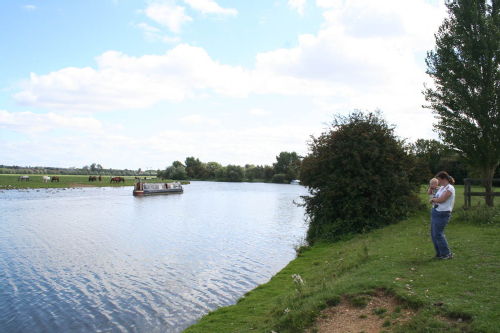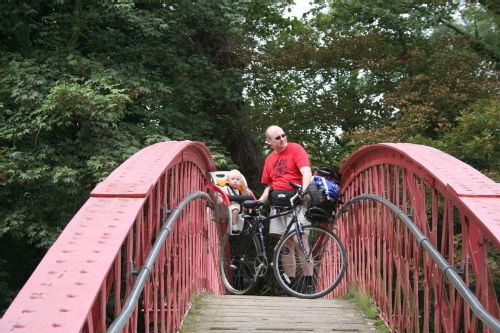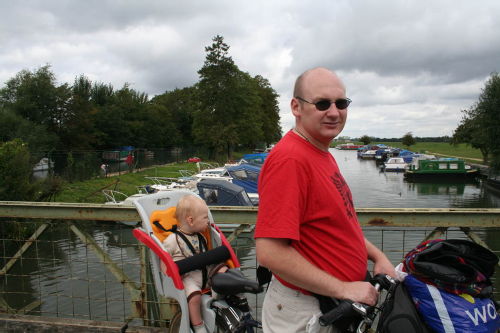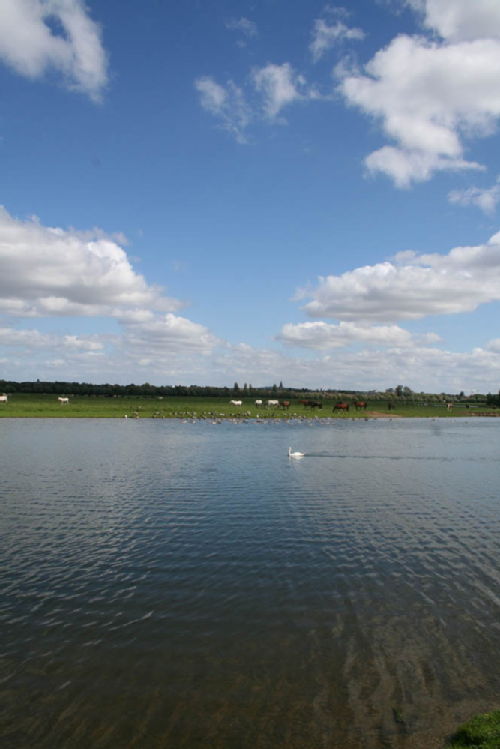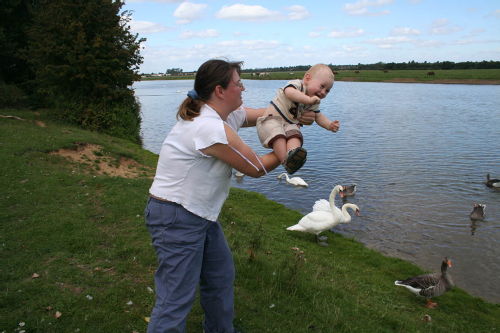All 9 entries tagged Cycling
View all 169 entries tagged Cycling on Warwick Blogs | View entries tagged Cycling at Technorati | View all 4 images tagged Cycling
December 11, 2008
Excellent service from Jardine Cycles
A new bicycle at last! After visiting 7 shops, I went to Jardine Cycles in Coventry (recommended by two experienced riders) - they actually seem to respect their customers. They have a smaller range than most other shops. But that is symptomatic of a good shop - they've chosen to stock the right bikes. They have genuine expertise and experience with the kinds of bikes that most people want to buy - including commuters (ignored by other local shops). And so, unlike Mike's Bikes (poor), the Coventry Cycle Centre (very poor), Broadribbs (dreadful), John Atkins (insulting), they actually listened to what I wanted and suggested the perfect bike: a Ridgeback Voyage with tall touring bars to replace the standard drop bars. The Cycle Scheme voucher took a week to arrive, and I collected the bike a few days later - all configured as requested.
Here's the message for bike shops facing recession: they took their time, listened to the customer, and got the deal - plus I spent an extra £200 on lights, a lock and a tag-along for Lawrence.
I'll give them a 5* rating.
And the bike - I rode back to Kenilworth and found it to be really good...
Click to enlarge
December 08, 2006
100,000 miles on two wheels – the good, the bad and the ugly
Follow-up to More surprising facts about motorcycling from Transversality - Robert O'Toole
The good:
- Just going around any fast and wide sweeping corner with excellent grip and visibility.
- Heavily scented country air being forced through the vents at the front of my helmet.
- 0-60 in 5 seconds on a 15 year old trail-bike, 0-60 in 3.5 seconds on a new Ducati.
- Overtaking a Porsche Boxster out of a right hand bend.
- Every time a complete stranger on a bike signals hello (nod of the head in the UK, wave in SA, shake of the leg in continental Europe).
- Filtering past a Maserati stuck in a mile long line of cars, millions of pounds worth of vehicles, all going nowhere – fools!
- Riding a twisty mountain road with an incredible view, locations including the Pyrenees, Montserrat, Auvergne and Chapman’s Peak Drive in Cape Town.
- Crossing France in a day on back roads.
- Riding dry dirt roads in southern Europe or South Africa.
- Kick starting a BMW 1000cc transverse twin.
The bad:
- Being hit on the head and knocked out by debris at 85mph on the motorway in Catalunya (glad I wasn’t driving a car, it would have come straight through the windscreen).
- Hitting a dead swan at 80mph in the middle lane of the M40.
- Dodging past sheets of glass falling off the back of a lorry on the M40 (I passed the lorry and stopped it).
- Being blown off a motorway while riding an F650 in heavy wind.
- Exhaust valve burn out in the outside lane of the motorway.
- Riding on motorways, especially the Paris Peripherique.
- Falling off in deep mud, glamorous locations including Salisbury Plane, the Ridgeway in Oxfordshire and the Karoo desert.
- Riding at 90mph in the outside lane of a French motorway, and being overtaken by a car with half of its wheels off the road.
- Diesel spills, especially around Warwick University (blame the bus company?)
- Car drivers, van drivers, caravaners.
And the ugly:

..the Moosehead biker gang (notice the complete absence of functioning motorcycles).
December 07, 2006
More surprising facts about motorcycling
Follow-up to Mike Waite – motorcycle roadcraft instructor from Transversality - Robert O'Toole
Some other facts about riding a motorcycle that will surprise car drivers:
- We tend to avoid using our brakes, especially as we enter corners. Bikes have five or more gears and usually a clutch that offers lots of subtle control and feedback. Engine braking is the effect that occurs when changing down a gear. Whereas the powerful front brake on a bike upsets its balance, subtle engine braking slows it down whilst maintaining balance. Some riders also gently touch the brake lever whenever they slow down, so as to warn following drivers.
- Filtering (moving to the front of a line of traffic) is both legal and encouraged by the police system. Of course it can be dangerous, but like most things in motorcycling, there are a whole set of techniques designed to make it safe.
- The majority of motorcyle accidents are not caused by car drivers (the so called SMIDSY or “sorry mate I didn’t see you”). They happen on corners, and are associated with poor cornering technique and too much speed. Using the visual point system aims to eliminate these dangers.
- Our roads are often covered in a film of spilt diesel. This emenates from poorly maintained or over-filled commercial vehicles. In the wet it can be a major threat to bikes. However, it also causes many car accidents. Car drivers are so isolated from the environment that they have no idea why they suddenly lose control. The majority of car fatalities are now caused by “sudden loss of control”.
- Motorcycles are neither cheap nor environmentally friendly. The average fuel consumption is around 40pmg. Sports bikes are as low as 25mpg. Tyres rarely last longer than 10,000 miles, and cost around £100 each. A full service for my BMW costs over £400. It is serviced every 5000 miles. My riding equipment, with armour, cost around £1000.
- Harley Davidson’s are not cool.
- Zen and the Art of Motorcyle Maintenance is nonsense. However Jupiter’s Travels is really great literature.
- Valentino Rossi is a god. Schumacher is a pointless bore.
- The first vehicle to cross the entire American continent on land (except for rivers) was a BMW R100 GS.
- The last vehicle to cross Siberia before global warming makes it impossible will probably be a BMW R1200GS Adventure.
Oh, and of course Ewan McGregor is genuinely hard.

And Charley Boorman? Well he had to put up with a lot.
Mike Waite – motorcycle roadcraft instructor
Follow-up to Being assertive and visible on the road – roadcraft for motorcyclists and cyclists from Transversality - Robert O'Toole
Mike Waite is one of the UK’s most respected instructors. I’ve not ridden with him, but I have heard good reports about his team. Not only does he run advanced training courses using the police roadcraft system, he also has a very good DVD for sale. See Mike’s web site for details.
The web site contains some extracts from the video, as well as some footage recorded from his training sessions. Watch a sample below (click on the triangle to make it play). If you have never ridden a big bike, you will be surprised at just how much technical skill, constant observation and intelligence it requires (if you want to stay alive). There is little comparison with driving a car. Note how the manouverability of the bike is used to its maximum, not only to maintain a safe position, but also to gain a better view of the road.
You will also hear Mike constantly talking about the visual point. This is the point at which the road disappears from view. Riders spend most of their time tracking the visual point. The movement of the point away to the left and to the right indicates the nature of upcoming bends. Also hear how Mike picks out features in the landscape such as telegraph poles and hedges. This is used to infer further information about the road. Modern bikes are so fast and so manouverable that such constant observation and planning is essential.
December 05, 2006
Being assertive and visible on the road – roadcraft for motorcyclists and cyclists
Follow-up to Cross in 3 seconds or you're dead – cycling to Warwick University from Transversality - Robert O'Toole
Recently I mentioned my approach to travelling on the roads:
“I am certainly capable of dominating the road and controlling the drivers”
This is easily misunderstood. It isn’t aggresive at all, it’s about being assertive and visible, but polite.
I follow roadcraft, the police motorcycling system. I have done training in the system, and spend a couple of hours every month practising. It works well. I’ve spent most of my time on two motorised wheels. The system has kept me confidently safe for 100,000 miles (apart from the occasional unavoidable collision with motorway debris). The important point is that it isn’t about aggresion, it is very controlled and considered. It relies on constant information given to other road users, with lots of thank you waves. It is all about being assertive and visible in order to counter the mind–dulling driver psychology that is such a danger to other road users.
Here’s an example: consider the turn into Westwood (the second turn towards Coventry). Can you spot something really dangerous about that junction? The pedestrian refuge just before the junction is placed too close to the junction. This means that if you are turning into Westwood, and have to stop mid turn (due to a pedestrian or some other obstacle), the car behind you will have no where to go. As most motorists do not leave a sufficient gap, there’s a good chance you will get shunted. Most car drivers are surprised by the fact that a motorcycle goes around such a corner significantly slower than a car (for various reasons). So the problem is even worse for motorcyclists. Rear end shunts represent a growing percentage of all bike accidents.
And the answer: control the following cars before you get to the junction. Firstly, get your brake light on early. Then gently slow until the following car is closer, the following car will then be travelling at the same speed. You can then control the speed of the following car so that you can enter the turn at a safe speed without any chance of being shunted. I can give you hundreds of other examples. It’s how you take a potentially dangerous method of transport like motorcycling and make it safer than any other form of transport.
I think many of these principles transfer to cycling. Obviously a cycle has less presence on the road, but the system remains the same:
- Take information.
- Use information (that means think and plan, something that most motorists fail to do).
- Give information (make sure it has been seen and acknowledged – eye contact!).
- Position (getting the required space around you on the road, this is the assertive and confident bit).
- Speed (not so easy on a bike, unless you are Chris May).
- Gear (not so relevant on a bike).
- Accelerate and manouvre.
And say thank you if appropriate.
To get started, read the roadcraft manual There is also a version for car drivers. I wonder if there is an equivalent for cyclists?
And then get trained. You can get advanced motorcycle training from RoSPA, the IAM, and the local police (Bike Safe Training). They all use the police method.
December 04, 2006
Evidence of the popularity of the Kenilworth to Coventry cycle lane
Follow-up to Cross in 3 seconds or you're dead – cycling to Warwick University from Transversality - Robert O'Toole
To disprove She Bevan’s unfounded claim that the cycle lane is not used, consider the tracks clearly visible on this photograph taken at 8am shortly after a rain shower.

I suspect that many of the cyclists start out early, being healthy and conscientious types. I’ve seen a wide mix of people on the path, including students. Lawrence is the only baby.
Surely with this volume of traffic crossing the junction at the top of the hill, a safer crossing is essential?
November 30, 2006
Cross in 3 seconds or you're dead – cycling to Warwick University
A photo taken this morning at the junction of Kenilworth Road and Gibbet Hill Road illustrates the problem…
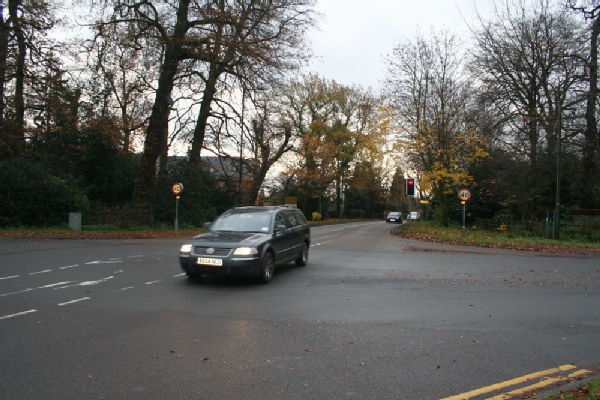
Look at the traffic lights through which the car has passed. See the colour: red, as in stop. In this case the car reached the lights just as they turned to red. The driver made no attempt to stop. There was no precautionary slowing down in the case of a change to amber (as required by law). As the car approached the lights the driver actually accelerated a little. This is not a rare occurence. Almost every time that we try to cross this road a car comes through, either as the lights are changing OR AFTER THEY HAVE TURNED RED. The flagrant disregard for road safety and law is astonishing. I have even seen some drivers come through seconds after they have changed, with lights flashing and horn blaring (blue BMW X5).
And what does this mean for the cyclist as they seek to cross to the other side of the cycle path? Under normal circumstances the light sequence at the junction allows around five seconds in which to safely cross. This is inadequate at a crossing on a busy cycle path. I ask: is the council negligent in laying a path with such a junction? Should there be a proper pedestrian crossing in place before the cycle path?
To make matters much worse, the failure of motorists to obey the traffic lights as they cross towards the University actually reduces the safe period in which pedestrians may cross to around three seconds. THREE SECONDS!
At this point I ask you to consider if such motorists understand that they are attempting to murder a 15 month old boy and his father?
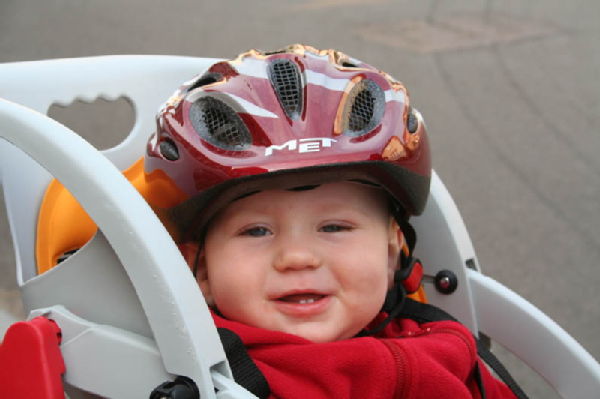
Does this sound bad? Then let me tell you, as a warning, about a circumstance in which one must definitely not attempt to cross this junction. Consider this photo…
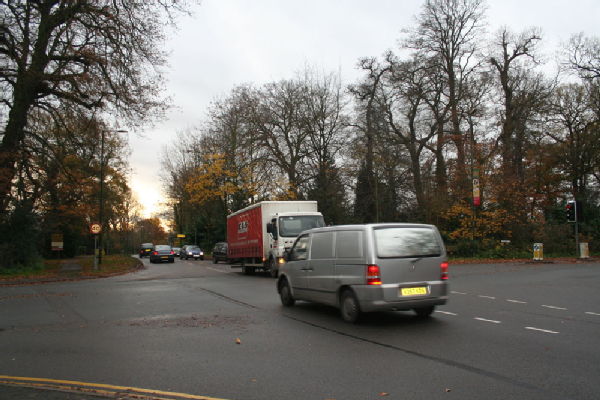
When traffic is turning across the junction, as in this case, smaller vehicles coming across from the direction of the A46 are difficult to see. The drivers of these vehicles cannot easily see the pedestrians. On many occasions I have seen cars emerging quickly (over 40mph) from behind the turning vehicles. The poor design of the junction makes this worse. Drivers seem to panic and accelerate, fearing that they will get stranded in the middle of the junction. I can predict that the fatal accident will happen under these circumstances.
So then what should be done? I will be contacting the University Road Safety Officer to express my fears further. I will also suggest to the police that occasionally stationing an officer at the lights might act as a deterrent. I have the number of the council officer responsible for the cycle path, perhaps a new junction arrangement is planned. I hope that it happens before there is a disaster.
For now I say: cyclists please be very cautious. Car driver, please approach the lights slowly, and as the lights change to amber be prepared to stop (as you are required to do by law).
And please stop trying to kill us.
Please note that I delete comments that are too far off topic.
August 29, 2006
Cycling along Oxford's Little Camargue
The river was busy with boats, including kayaks, noddy boats and proper barges…
We like bridges…
And…
Once we reached the Botley Road, we headed into town for coffee at Borders (more child friendly than Blackwells). Lawrence rearranged the philosophy section, before seeking less childish pursuits…
The "wild" horses, cattle and flocks of greylag geese add interest to the wide open meadow and gently rippled river, reminiscent of somewhere in the South of France…
Lawrence being irrepressibly keen to make his way into the river, I suggested to Emma that he learn a lesson in freestyle diving…
Cycling in Devon
Along the shore of the Estuary, next to the nature reserve:
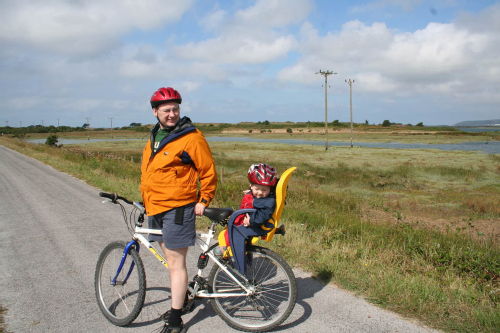
Passing under the Torrington Bridge:
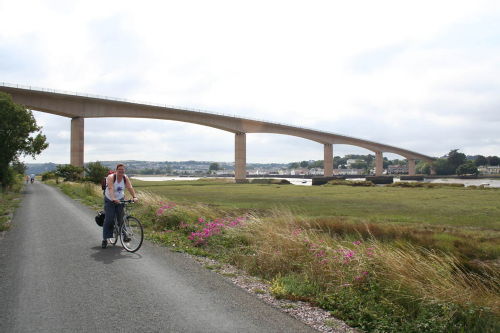


 Robert O'Toole
Robert O'Toole

 Please wait - comments are loading
Please wait - comments are loading
